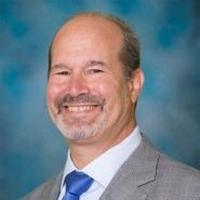
Matt Zbrog
Death and taxes are two certainties of modern life. But when it comes to the latter, some people still try to avoid it. Nearly 20 percent of all income in the US is not properly reported to tax authorities, amounting to a $500 billion gap between what’s owed and what’s received. That’s money that’s meant to be spent in the nation’s best interests—on healthcare, roads, defending troops in action—and instead it’s been pocketed by the self-serving and the greedy.
Simply put, tax evasion means intentionally not paying the taxes you’re supposed to. Residing under the umbrella of tax fraud, this is different from tax avoidance, which is taking advantage of legal avenues for reducing one’s overall tax burden. Tax evasion is much more serious, and can involve classifying a personal expense as a business expense, failing to declare income or assets, or falsifying information to avoid further payment. It can also be a side effect of more nefarious crimes. Tax evasion has taken down sitting vice-presidents (Spiro Agnew), award-winning movie stars (Nicolas Cage), and one of the most notorious gangsters ls in American history.
Al Capone, who earned himself headline-friendly nicknames like Scarface and Public Enemy Number One, made his career in the early 20th century by skirting laws against the sale of alcohol. During a seven-year reign, he expanded his gangland businesses through increasingly violent means and protected them with well-connected (and well-bribed) allies. In 1927, Capone was worth an estimated $100 million—a sum that amounts to nearly $1.5 billion in today’s terms. Not bad for a man who never finished the sixth grade.
Even though most of the country knew how he had amassed his wealth, Capone was notorious for avoiding prosecution. He put physical distance between himself and his most brutal crimes, concocting solid alibis in advance. A mixture of fear and bribery dissuaded any potential witnesses. Prosecutors were forced to pursue frustratingly minor cases against Capone, charging him with things like vagrancy and contempt of court.
Things changed when a 1927 Supreme Court case (United States v. Sullivan) found that illegally earned income was still subject to income tax. That meant if Capone was really worth $100 million, he owed a significant sum in taxes and was guilty of a serious crime.
The IRS assigned a special investigation unit to Capone and began building a case for tax evasion. It wasn’t an easy sell: first they had first prove Capone was making money illicitly, and then they had to prove where that money was.
Investigators poured over some two million documents while chasing the paper trail of phone records, private ledgers, bank statements, and credit card records. Handwriting samples had to be collected and compared across voter registers, bank deposits, and bail bonds. By 1931, investigators had collected enough evidence, and witnesses, to formally charge Capone. A grand jury indicted him on 23 counts of tax evasion, and a guilty verdict led to an 11-year prison sentence.
Capone’s conviction sent a strong message to the public that everyone had to pay their fair share. The effects were immediate: both legitimate and illegitimate business owners began paying what they owed. The year Capone was sentenced, the Chicago office of the IRS collected over a million dollars in delinquent tax payments, an amount more than double the previous year’s take.
Today’s forensic investigators, both in the public and private sector, are continuing to track down cases of tax evasion. The money trail is digital now. Authorities are chasing potential tax evaders by data-mining bank records and tracing transactions in and out of offshore accounts. As transparency increases and more transactions are conducted digitally, it will become harder for someone to conceal their earnings and evade tax payments. And, as new forms of digital money such as cryptocurrency gain wider adoption, investigators will have to take their sleuthing to the next technological level.
But investigators don’t have to piece it together all by themselves. Advances in AI and other algorithms mean that anomalies in tax returns are more likely to generate a red flag. That means investigators can spend less time looking for needles in haystacks, and more time digging into cases which have already provoked reasonable suspicion.
There’s no algorithm for justice. There’s still a strong need for investigators to perform their due diligence. Many of the same tactics used to bring down Al Capone are still in use today: comparing records, subpoenaing documents, interviewing possible witnesses, and following the money.
Utica College (BS in Fraud and Financial Crime Investigation)
Utica College offers an online degree-completion program that culminates in a bachelor of science in fraud and financial crime investigation. The curriculum has been rebuilt from the ground up to consider the modern-day landscape of financial crime and covers the regulations, the math, and the processes used to combat it.
Students may choose to concentrate in either financial investigation or fraud prevention and detection. Do note that this is a degree-completion program. As such, applicants must have either an associate’s degree or a minimum of 57 completed college credits.
John Jay College of Criminal Justice (BS in Fraud Examination and Financial Forensics)
The John Jay College of Criminal Justice is an international leader in criminal justice, and their BS in fraud examination and financial forensics takes that leadership into the world of white collar crime. Students of the program learn how to evaluate symptoms of fraud, how to utilize data in the identification of fraud, how to develop an investigative methodology, and how to communicate one’s findings in a professional manner.
Classes cover topics such as forensic accounting; corporate and white collar crime; and special topics in fraud examination and forensics. The program consists of 120 credits.
Golden Gate University (MS in Accounting)
Golden Gate University’s master of science in accounting (MSA) program allows for concentrations in financial accounting, forensic accounting, internal auditing, and managerial accounting. Drawing on the school’s proximity to San Francisco’s financial district, graduates go on to work in private industry, government, public accounting, and top consulting firms.
Classes cover the following topics: accounting research; internal controls over financial reporting; advanced studies in business law; and ethical accounting. The program consists of 30 credits.

Suzanne Lynch is a professor of financial crime and compliance management at Utica College, where she also serves as assistant executive director of the Economic Crime Institute. She received her BS in criminal justice from Wayne State University, and her MS in economic crime management from Utica College. Outside of academia, Lynch has worked in fraud management positions at MasterCard, Goldman Sachs, and Comerica Bank. She’s also led training sessions on fraud detection for global law enforcement agencies and financial institutions.
At Utica, Lynch has been a key architect of the financial crime and compliance management program, adopting enhanced course materials and developing the prevention and detection concentration. Her outreach towards establishing professional standards of practice have gotten buy-in from Association of Certified Anti Money Laundering Specialists (ACAMS), the U.S. Marshals Service, and the New York National Guard.

David Shapiro is a distinguished lecturer at John Jay College of Criminal Justice, where he leads classes in forensic accounting, auditing, and white collar crime. He’s also the coordinator of the fraud examination and financial forensics (FEFF) program at John Jay. He received his MBA with a concentration in accounting and his JD from Seton Hall University. Prior to academia, Shapiro worked both as a special agent with the FBI and as a corporate investigator in the private sector. An expert in fraud risk and financial crimes, he’s written or contributed to dozens of scholarly articles on the subject, and wrote a special chapter for the book “How They Got Away With It: White Collar Criminals and the Financial Meltdown.”

John McWilliams is a professor at Golden Gate University, where he teaches classes on federal taxation and ethical accounting. He received his BS in accounting from Ohio State University and his JD from Duke University. Prior to joining academia, McWilliams spent four years at Price Waterhouse as a tax manager. Since then, he’s taught classes on tax law at the undergraduate and graduate level, written and taught continuing education courses for the California CPA Education Foundation, and published expert treatises on the taxation of corporations and shareholders. He’s served in multiple executive roles for the California Society of CPAs, and continues to act as a tax consultant to lawyers and accountants. In 2010, McWilliams received the Outstanding Service Award from Golden Gate University.

Matt Zbrog
Matt Zbrog is a writer and researcher from Southern California. Since 2018, he’s written extensively about the increasing digitization of investigations, the growing importance of forensic science, and emerging areas of investigative practice like open source intelligence (OSINT) and blockchain forensics. His writing and research are focused on learning from those who know the subject best, including leaders and subject matter specialists from the Association of Certified Fraud Examiners (ACFE) and the American Academy of Forensic Science (AAFS). As part of the Big Employers in Forensics series, Matt has conducted detailed interviews with forensic experts at the ATF, DEA, FBI, and NCIS.